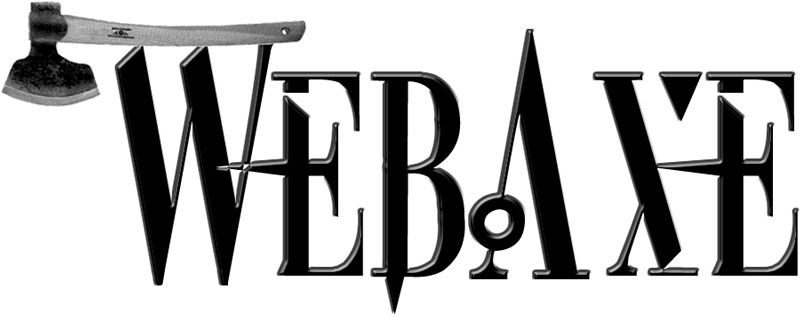Jared Smith from WebAIM recently spoke at the Refresh06 conference in Orlando, Florida. The slides for his presentation User-center, Standards-driven Web Accessibility are available in Acrobat and HTML formats. Thanks to Jared for providing.
Ross and I attended the Fourth Annual Usability and Accessibility Event on World Usability Day, November 14, at Michigan State University in East Lansing, Michigan. This podcast covers the day’s events with our comments and conversations with various attendees. It’s a lot of fun!
Download Web Axe Episode 35 (Usability and Accessibility Conference)
Some folks I met represented the following organizations:
Considerations for designing an accessible web site, including discussion on web site conventions, navigation, color, text, and layout.
Download Web Axe Episode 34 (Design Considerations for Accessibility)
Stick to Conventions
- Search upper right
- Global navigation across top
- Sub navigation on sides
- Icons
Navigation Considerations
- Skip navigation
- Indicate visited pages, current page
- Use breadcrumbs where possible
Color Considerations
- Ensure enough color contrast
- Light on dark, or dark on light?
- If you change the color of an anchor state, change them all
- Never use color to convey information
Layout Considerations
- If you have a low vision/large text style sheet, convert layout to one column
- Pay attention to if it is obvious you can scroll downward or not
- If Article is broken up between several pages, provide a link to a single page with the whole article for easy printing
- Try and design for 760px minimum width
Text Considerations
- Sans-serif fonts are generally easier to read on a screen
- Print serif fonts are, but light reflects off of paper where screen illuminates light
- Text Sizing
- Ensure font can be enlarged with out breaking the design
- Headers should be larger than regular text (to indicate more importance)
- Fonts should be decent size, not everyone knows how to resize text
Other Considerations
- Limit the use of Flash
- Print Style Sheets
- Graphical buttons should be text with graphical backgrounds (for sizing without pixelation)
- Include an access guide, or site help
- No flickering
- Audio–plan for text-only version and links
- Video–plan for real-time captioning
The Open & Closed Project
In case you haven’t heard, Joe Clark is starting a research project called The Open & Closed Project. The micropatronage page is here. The goal of the project is:
to write a set of standards for the four fields of accessible media – captioning, audio description, subtitling, and dubbing
A set standards for accessible media is much-needed in the web development community. Cheers to Joe for putting this together. Let’s all help support this cause.
Accessibility Statements
There has been some blog discussion recently on whether or not a web site should provide an accessibility statement. You know, the small text link on the site that says “site accessibility” or “AAA compliant”. It seems that fear of being sued and trendiness have been the main reasons for accessibility statement pages on many web sites.
The consensus from the professional blogs, with which I mostly agree, is that a Help page should be implemented rather than an accessibility page. The Help page should handle any pertinent topics in addition to accessibility features that may be unique to the web site. I say “unique” because if a Help page exists at all, the content should be outside of general knowledge (such as tab order) and browser-specific instructions (such as pressing CTRL + to enlarge text).
The only exception I would point out is a web site that advertises the accessibility of the web site itself. Case in point, the CheckEngine USA web site, which sponsors Web Axe, contains a Site Accessibility page. The reason for the page is as much for marketing and educational purposes as it is for users with disabilities, etc. The company’s specialty is accessibility (as well as web standards and usability) so in this particular case, I believe it makes sense.
More:
